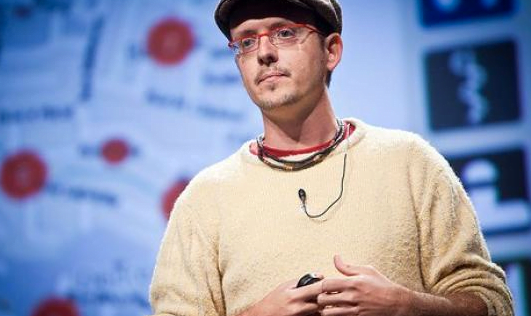Ed note. This post, from Jessica McKenzie, first appeared in Tech President.
Imagine 20, 30, or even 50 thousand volunteers helping a community, whether on the other side of the country or the other side of the world, in the aftermath of a disaster, and all with just a few swipes on a smartphone. Patrick Meier’s new platform MicroMappers makes that possible, and anyone with an Internet connection and five minutes to spare can contribute to disaster relief.
Patrick Meier is the Director of Social Innovation at the Qatar Foundation’s Computing Research Institute (QCRI) and before that he was Director of Crisis Mapping at Ushahidi. He announced the launch of MicroMappers on his blog last week, and techPresident reached him by phone to learn a bit more about the soon-to-launch platform, which he says is ready to mobilize thousands of volunteers if disaster struck tomorrow.
“The genesis for the project was the typhoon in the Philippines, Typhoon Pablo, in which we only had 12 hours to collect [and process] all the tweets from the first 48 hours.” The United Nations Office for the Coordination of Humanitarian Affairs (OCHA) reached out to Meier and his team at the end of day two and asked if they would be able to collect the tweets, identify pictures and video, with their location.
What they needed was a rapid damage assessment carried out in record time—under normal circumstances, explained Meier, damage assessment takes up to a week. The U.N. knew that the data from Twitter would not be as thorough and perfect as a week-long assessment, but in that amount of time, good enough was good enough.
More than half the amount of the 12 hours was spent building the tools necessary to carry out the task, leaving them very little time to process information. In the end, they tagged nearly 100 pieces of multimedia content and geo-referenced each item so it could be placed on a map.
In February, Meier got a call from OCHA. “What we were able to deliver was a big deal, according to the U.N.,” said Meier. They went on to explain that they knew they would need something like that again, and asked if he would be ready.
“No way,” Meier said, but added that he would be happy to build a platform, to customize it for their needs, and to make it a better, faster product. The U.N. was thrilled.
What is truly remarkable about the platform, Meier explains, is the democratization of disaster relief. Anyone can participate for any amount of time, which means more people will be interested in participating and in the end they will feel more rewarded.
Previously Meier had organized crowdsourcing efforts with a global volunteer task force of nearly 1,000. Those volunteers however couldn’t just sit down and go—they had to be trained first. Meier found that fewer and fewer volunteers were coming back, because there was a “seriously high barrier to participating.” The crowdsourcing model no longer scaled, even though there was still a need for more volunteers.
Enter microtasking, in which larger tasks are broken into digestible bites that require next to no training. The interface got a serious upgrade, too—before they were using Google Spreadsheets to organize, and “Who wants to stare at a Google spreadsheet for 20 hours a day?”
Although the platform was built in a partnership with OCHA, it is not restricted to use by the U.N. Meier has already had conversations with the Red Cross, the Federal Emergency Management Agency (FEMA), and New York City’s Office of Emergency Management about using MicroMappers as part of disaster relief.
As for the information generated by volunteers, Meier is leaving it up to the established organizations to decide what, if any, resulting data they will release. It comes down to the problem of informed consent, he explained, and when working with thousands of tweets it makes it nearly impossible to tackle that. On the other hand, Meier says, I’m a big proponent of open data, but privacy is always a concern.
Personal Democracy Media is grateful to the Omidyar Network and the UN Foundation for their generous support of techPresident’s WeGov section.
